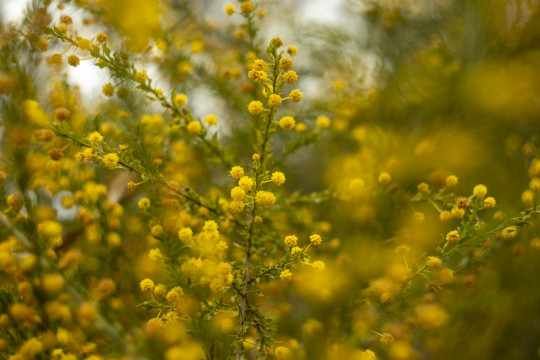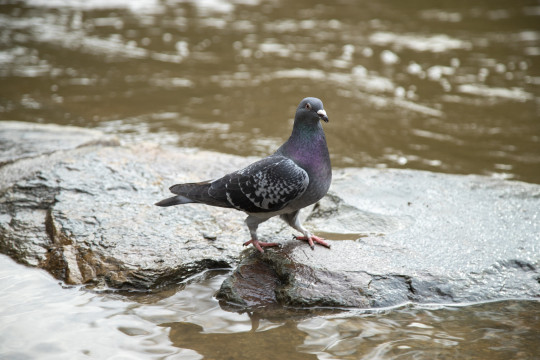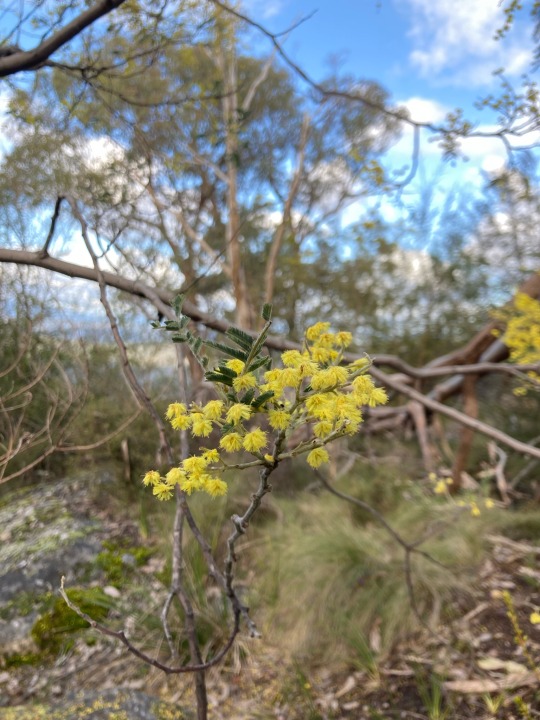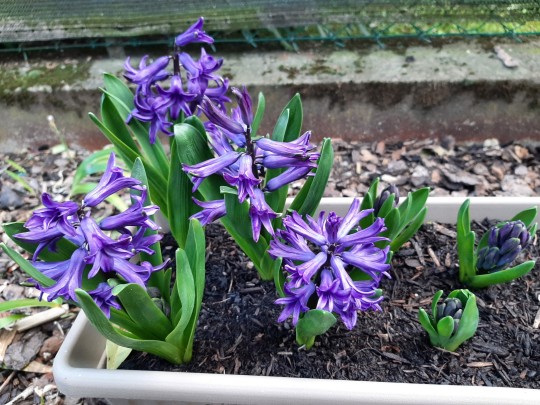Text


The Golden Wattle dress by Norman Hartnell
Designed for Queen Elizabeth II to wear on her Australian tour in 1954, this evening gown was embroidered with wattle, the national flower of Australia.
75 notes
·
View notes
Text
Wattle! Of course everyone calls her Waddles but still, named after a tree!

350 notes
·
View notes
Text
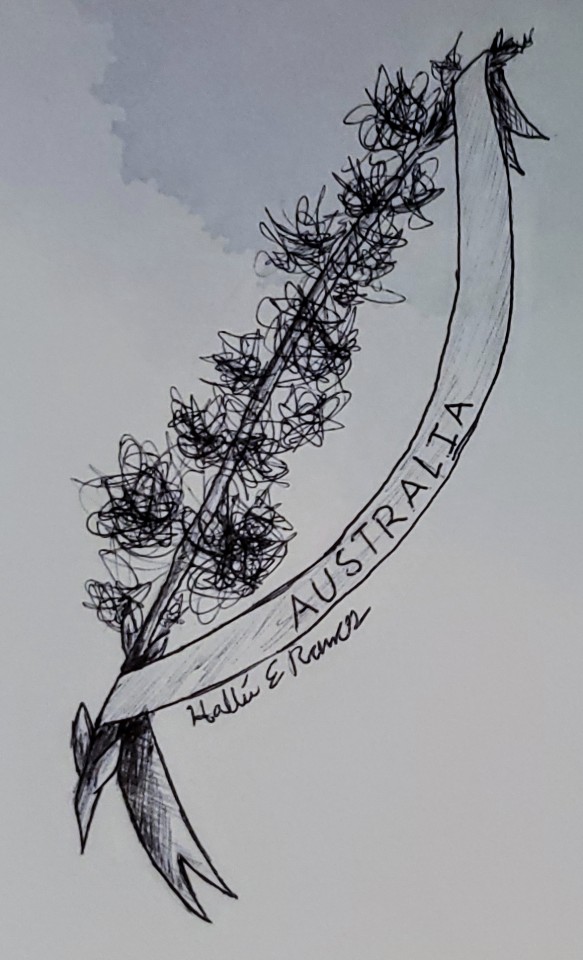
Golden Wattle — Inktober 2022 Day 10
Today's national flower is for Australia 🇦🇺
Double digits!
(I'm strictly working in ballpoint pen, any color is the paper.)
4 notes
·
View notes
Text
A tree has fallen in the back of my house.
Now that I look at the space where it once stood, I wonder,
"How did it look before, when the tree was still there?"
It was a mighty golden wattle that my dad planted,
when I was little, and he used to travel around the state.
On one of those trips, he came home with a little golden wattle.
Now I'll miss its golden flowers during the winter,
the view of its green leaves from my desk,
and I'll miss my dad every time I see that empty space
where that tall, mighty golden wattle once stood.
A tree has fallen in the back of my house
and has taken a part of me with it.
12 notes
·
View notes
Text
#1434 - Melanterius sp. - Spotted Seed-weevil


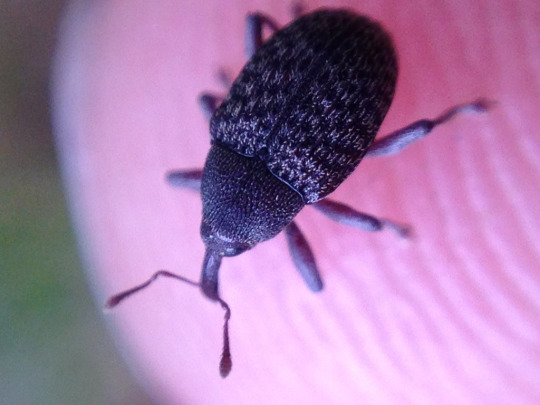
AKA Acacia Seed-weevil. Both adults and larvae feed voraciously on wattle and related plants, here in Australia, and therefore one of the species used for control of invasive Acacia and related plants in South Africa. Unsurprisingly, plants from SW Australia do very well in South Africa - e.g. Paraserianthes lophantha, known variously as Cape Leeuwin Wattle or Crested Wattle, and Stink Bean.
Adults are usually active between September and December, but these are old photos. They shelter on their host plant or nearby, coming out to feed on the buds, flowers and young leaves of their preferred Acacia host plant. The females will chew a small hole in the seed case and lay her eggs within. In good years for the weevil, 100% of the seeds will be destroyed.

After the grubs are ready to pupate, they will emerge, burrow into the soil, and wait six months, or until the following year, to emerge as adults. The adults themselves can survive for over a year, ensuring that the species will continue even if it’s a very bad year for wattle seed production.
Dunsborough, in WA’s SW corner.
21 notes
·
View notes
Text
#1727 - Acacia littorea - Coastal Wattle


Also known as Sharktooth Wattle.
Acacias are native to Australia and Africa, and are ludicrously diverse in Australia, with well over a thousand species. Which made it a bit problematic when genetic evidence proved that the genus included large numbers of species that shouldn’t be in it, and if botanists had strictly obeyed the naming rules, the vast majority of Australian species would have to be renamed. Instead they decided that one of the Australian species was going to be the new Classic Acacia, and renamed a bunch of African species instead. Oddly enough, this decision was made in Melbourne, Australia.
Anyway - this particular species of Acacia is native to the SW coastline, growing as a dense shrub up to 3m tall. Quite a good plant for coastal gardens, as long as the soil has excellent drainage.
Photographed next to @purrdence, overlooking Smiths Beach
5 notes
·
View notes
Text
#1728 - Acacia longifolia - Longleaf Wattle


AKA Sydney Golden Wattle, acacia trinervis, aroma doble, golden wattle, coast wattle, sallow wattle.
Acacias are grow in cultivation in many parts of the world (over 2 million hectares at lastcount), since so many of the species are drought tolerant and they fix their own nitrogen. Unfortunately, those same properties mean that tey can also escape cultivation and become a weed, or just hitch a lift to new areas and take over.
That has been the case with this species, which is native to coastal Southeastern Australia but has become an increasing problem in bushland here in the west, as well as in other parts of the eastern states, as well as in New Zealand, South Africa, Spain, Portugal and Brazil. It grows rapidly, easily reaching 8m in 5 years.
Acacia longifolia is cultivated in subtropical regions of the world for prevention of soil erosion, food (flowers, seeds and seed pods), yellow dye (from the flowers), green dye (pods) and wood. In Tasmania the ripening pods have been roasted and the seeds removed and eaten. In Africa, where it’s a major pest, a gall-forming Australian wasp has been introduced and seems to be working quite well.
2 notes
·
View notes
Text
#1729 - Acacia huegelii

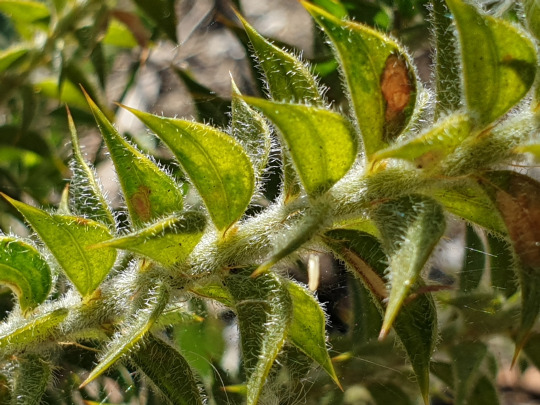
Named after Carl Alexander Anselm, Baron von Hugel (1796 – 1870), an Austrian traveler and naturalist who visited the Swan River and King George Sound in 1833.
Another SW endemic, growing up to a meter tall. Remarkably hairy for a wattle, but also distinguished by the asymmetrically triangular phyllodes. The flowers are cream coloured rather than the usual yellow of other wattles.
Found on low ridges, flats and sand dunes growing in lateritic gravel or sandy soils, often as part of Banksia or Eucalyptus woodlands or other open forest communities, but in south western areas it appears in dune swales with Agonis flexuosa and species of Kunzea. This one was growing in open woodland near The Spectacles lakes, in Perth.
1 note
·
View note
Text
#1730 - Acacia saligna - Golden Wreath Wattle



AKA Acacia bracteata, Acacia cyanophylla, Acacia lindleyi, Mimosa saligna, and Racosperma salignum, coojong, orange wattle, blue-leafed wattle, Western Australian golden wattle, willow wattle, western wattle, and, in Africa, Port Jackson willow. Port Jackson is at the other end of Australia.
It grows rapidly, up to 6m high. The phyllodes can be up to 25cm long, and there’s a nectary at the base of each leaf that attracts ants. Ants also collect and distribute the seeds.
Originally found in Western Australia, over a wide but discontinous range, but now found in semi-arid areas in many parts of the world, as well as over in the Eastern states, where it has become a major weed. In South Africa, some control has been achieved using an Australian fungus, and Australian weevils. It has been planted for tanning, revegetation, animal fodder, mine site rehabilitation, firewood, mulch, agroforestry and as a decorative plant.
These ones were growing in Wannanup, but practically every new subdivision and empty lot in Perth will have some show up, sooner or later.
4 notes
·
View notes
Text
#1732 - Acacia cochlearis - Rigid Wattle

While the focus in this photo is on the unidentified galls, the leaves are distinctive enough to identify the host - a shrub wattle up to 3m tall, growing in sandy soils in coastal areas on sandplains and sand dunes. Found from Lancelin to Israelite Bay, where it is found growing as solitary plants or in dense thickets - it certainly does all of that in the places I’ve seen it.
It flowers from July to October, with the flower heads spherical and yellow, and not easily distinguished from the majority of other wattles.
Rigid Wattle was first formally described by the botanist Jacques Labillardière in 1807 as Mimosa cochlearis as part of the work Novae Hollandiae Plantarum Specimen. It was then reclassifed as an Acacia by Heinrich Wendland in 1820 as part of the work Commentatio de Acaciis aphyllis, reclassified again in 2003 by Leslie Pedley as Racosperma cochleare then transferred back to genus Acacia in 2006 in that controversial taxonomic decision I’ve mentioned elsewhere.
2 notes
·
View notes
Text
#1472 - Acacia lasiocarpa - Glow Wattle


AKA Panjang or Pajang
A small spiny shrub, generally under 50cm tall and a meter wide, that flowers prolifically. Endemic to the SW corner, again,growing in seasonally damp areas, in and around swamps, and on flats and coastal dunes, in a variety of soils. This one was growing next to the freeway at Wandi.
18 notes
·
View notes
Text
#1731 - Acacia extensa - Wiry Wattle

A wattle that’s taken leaf reduction to extremes. The phyllodes don’t even resemble leaves. A shrub that grows up to 2 meters in height, and native to the southwest prefering sandy or sandy lateritic soils in damp areas along water courses or near lakes and swamps. This one was growing on the side of the road in Ambergate Reserve near Busselton.
Generally adaptable in cultivation, grown from scarified or lightly boiled seed. Responds to sunny, reasonably well drained positions in most soils.
1 note
·
View note
Text
#2167 - Acacia pycnantha - Golden Wattle


Alas not in bloom - see Melburnian's photo below.

Australia's floral emblem, and now a weed in some parts of Australia, and overseas in Africa and Europe. Native to the SE of the country. As well as being an iconic Australian plant, grown commercially for the ludicrous amounts of tannin in the bark.
Golden Wattle grows as an understorey plant in Eucalyptus forest, to a height of 8 metres (26 feet). Instead of true leaves it has flattened leaf stalks called phyllodes. The profuse fragrant golden flowers are pollinated by honeyeaters and thornbills, which are actually visiting extrafloral nectaries on the phyllodes and only pick up pollen by accident.
Of course, whether Australia's wattles should actually be in the genus Acacia is a botantical controversy - over the last two decades proposals were made to split Acacia into three - Acacia, Senegalia, and a third which would encompass pretty much all 940 Australian species — named Racosperma. That change would have been annoying enough - instead a vote was taken at the 2005 International Botanical Congress in Vienna to let the Australian species keep the name Acacia, when by all rights the African species had priority. Acacias are just as iconic there, too.
But the change has stuck, and now the range of plants-formerly-known as Acacia is quite complex.
Acacia. Australia & Pacific: 1,077 species; Asia: 12 species
Acaciella. Americas: 12
Mariosousa. Americas: 13
Parasenegalia. Americas: 11
Pseudosenegalia. Americas: 2
Senegalia: Americas: 96; Africa: 62; Asia: 56; Australia & Pacific: 2
Vachellia: Africa: 72; Americas: 61; Asia: 33; Australia & Pacific: 9
(Info from WorldWideWattle )
1 note
·
View note
